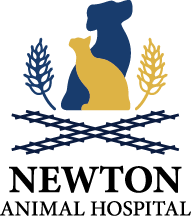Library
-
Olopatadine ophthalmic is an antihistamine medication used to treat pruritus (itchiness) of the eyes caused by allergies in animals. Olopatadine ophthalmic comes in liquid drop suspension form.
-
Omeprazole is given by mouth and is used off-label to treat ulcers and erosions in the stomach and upper small intestine. Give as directed. Side effects are uncommon but may include stomach upset, such as vomiting, diarrhea, or gas. Do not use in pets with a history of allergies to this class of drugs. If a negative reaction occurs, call your veterinarian.
-
Ondansetron (brand names Zofran®, Zuplenz®) is given by mouth or injection and is used off label in dogs and cats to treat vomiting. Side effects are not common but include constipation, sleepiness, or head shaking. Do not use in pets that are allergic to the medication.
-
Besides making your dinner taste great, onions, garlic, leeks and chives can cause severe medical problems for your dog. Although clinical signs of illness can occur soon after your dog eats the veggies, signs may take days to appear.
-
Open fontanelles are soft spots in the skull, or gaps between the skull’s growth plates. They can be normal in young puppies, especially small breeds, and typically close or harden by 9-12 weeks of age. This handout discusses causes, diagnosis and treatment of open fontanelles in small breed puppies.
-
Ophytrium is an ingredient extracted from Japanese mondo grass (Ophipogon japonicus) that is used in several topical treatments (i.e., Douxo® S3 products). It is used on dogs and cats with oily to flaky skin. It is believed to help control odor and dandruff, soothe and hydrate the skin, maintain the skin barrier, untangle the fur, and soften the coat.
-
There are many reasons why your cat might need oral surgery, including dental disease and oral tumors. Your veterinarian may refer your cat to a board-certified dentist, surgeon, or oncologist. Prior to your cat's surgery, blood tests will be performed to prepare an anesthetic protocol suitable for your cat. Most cats recover with minimal discomfort and will need to eat soft food until healing is complete.
-
There are many reasons why your dog might need oral surgery, including oral tumors, dental disease, or repair of jaw fractures. Your veterinarian may refer your dog to a board-certified dentist, surgeon, or oncologist. Prior to your dog's surgery, blood tests will be performed to prepare an anesthetic protocol suitable for your dog. Most dogs recover with minimal discomfort and will need to eat soft food until healing is complete.
-
There are many causes of oral swellings, including local trauma, infection, fluid accumulation and tumors. If you find an oral swelling in your cat's mouth, book an appointment with your veterinarian as soon as possible. Your veterinarian will perform diagnostic tests such as intraoral X-rays, blood tests, and tissue sampling. Treatment and prognosis depend on the cause.
-
There are many causes of oral swellings, including local trauma, infection, fluid accumulation and tumors. If you find an oral swelling in your dog's mouth, book an appointment with your veterinarian as soon as possible. Your veterinarian will perform diagnostic tests such as intraoral X-rays, blood tests, and tissue sampling. Treatment and prognosis depend on the cause.


